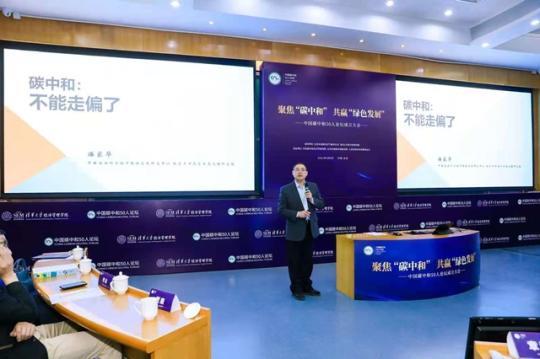The concept of "carbon neutrality" is too lively?
Experts say that these concepts cannot be deviated
While "carbon neutrality" is constantly being put on the agenda by governments and enterprises at all levels, some experts in this field believe that there are still many misunderstandings in the understanding of "carbon neutrality" from all walks of life that need to be clarified.
"Some understanding of carbon neutrality is off." On May 8, Pan Jiahua, a member of the National Climate Change Expert Committee and a member of the Chinese Academy of Social Sciences, gave a keynote speech at the "China Carbon Neutrality 50 Forum". The concepts of carbon dioxide, forest carbon sinks, and rice farming methane are very lively.
But he emphasized that the most direct and reliable way to achieve carbon neutrality is to change the energy structure. There is no shortcut.
Pan Jiahua listed a set of data: 80% of carbon dioxide is produced by fossil energy, at least 40% of methane is produced by fossil energy, and 30% of nitrogen oxides are also produced by fossil energy.
If fossil energy can be reduced to zero, 90% of greenhouse gases will follow.
Therefore, the current carbon-neutral "carbon" mainly refers to the carbon dioxide emitted from the combustion of fossil energy.
Although other carbons are also important, they are not the main direction at this stage and cannot be overwhelming.
Regarding total control in the energy transition, he proposed that fossil energy is polluting and non-renewable, so it needs to be controlled.
But more renewable energy should be better.
If a local enterprise has unlimited "greatness" and can fully develop these industries, "there is no need to control the total amount."
Energy saving and emission reduction and increasing carbon sinks are the two basic ways to achieve carbon neutrality.
At present, some heavy chemical companies still hope to achieve carbon neutral goals through carbon compensation, such as proposing to build "carbon neutral forests."
Pan Jiahua quoted the "China Forest Resources Census Report" published by the National Forestry and Grass Administration in 2019 as saying that my country's forest carbon sinks are 434 million tons a year.
If converted into carbon dioxide, it is only 1.2 billion tons.
China's total greenhouse gas emissions in 2019 were 14 billion tons, of which fossil energy carbon dioxide emissions were 10.2 billion tons.
He described the role of forest carbon sinks in the carbon neutralization of fossil energy as "a drop in the bucket."
Green plants are carbon sinks and carbon sources.
These carbon green plants are climate-neutral carbon, which absorbs carbon dioxide from the atmosphere. Finally, when its life forms die or die, the carbon will return to the atmosphere.
Therefore, green plants cannot be permanent carbon sinks.
In addition to natural means, another technological means, carbon capture, utilization and storage (CCUS) is also regarded as an important tool to increase carbon sinks.
Wang Jinnan, dean of the Environmental Planning Institute of the Ministry of Ecology and Environment and academician of the Chinese Academy of Engineering, said that CCUS is still very limited under the current technical system.
"One is the issue of cost. Each ton of carbon dioxide costs 200 to 800 yuan, which is equivalent to 0.24 yuan per kilowatt-hour of electricity. How can it stand it?"
As an effective tool for the country to encourage emission reduction, the carbon trading market affects the heartstrings of many investors.
At the end of February this year, when Huang Runqiu, Minister of the Ministry of Ecology and Environment, went to Hubei Province and Shanghai to investigate the construction of the carbon market, he said that the construction of the national carbon market has reached the most critical stage. Start online trading before the end of June.
In addition, Wang Jinnan also called for the establishment of a carbon peak and carbon neutral top-level plan.
On May 8, the "China Carbon Neutrality 50 Forum" co-sponsored by Tsinghua University Global Common Development Research Institute, China New Supply Economics Research Institute, Environmental Planning Institute of the Ministry of Ecology and Environment, and Beijing Huasoft Science and Technology Development Foundation was established in Beijing .
The forum aims to thoroughly implement the "Carbon Peak and Carbon Neutrality" action plan. The first group of members include leaders in the ecological and environmental protection, economic and financial circles, and industrial and technological circles.
Author: Ma Chenchen

